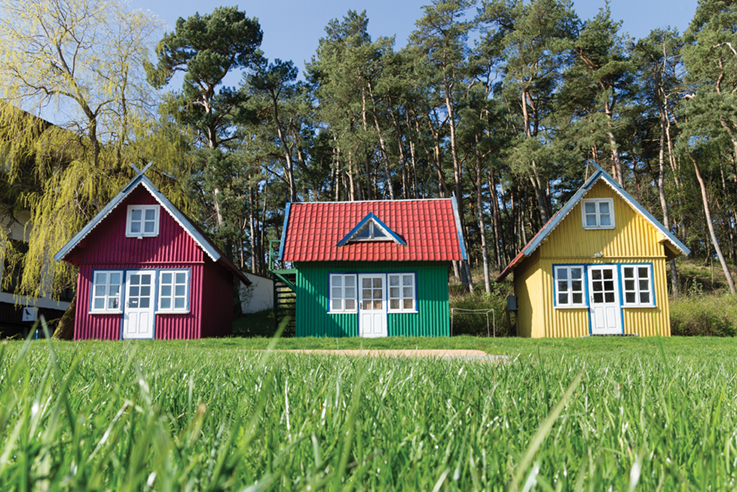The tiny house movement encompasses people from all walks of life: recent graduates saddled with student loan debt, retired couples looking to downsize, environmentally conscious people looking to leave a smaller carbon footprint, and those who would rather spend their money on life experiences than a mortgage payment.
These are some of the cost advantages of tiny home living.
Financial Benefits
The cost savings can be one of the most appealing aspects of living in a tiny house. Fewer building materials, lower tax rates and improved energy consumption are some of the ways you will spend less with this lifestyle.
Materials and Labor
Building a tiny home requires fewer materials and less labor than building a traditional home. You can benefit from this price reduction in one of two ways: enjoy the savings or opt for high-end finishes you couldn’t afford in a traditional home.
It’s possible to save money by building it yourself but only if you have the time and knowledge to do so. The small size is often deceiving – tiny homes can take a long time to build, especially if you lack experience. However, tiny home building kits are available if you’re ready to take on the challenge.
Interest Payments
You can save thousands of dollars in interest by avoiding a traditional mortgage. Since tiny homes are relatively inexpensive, you can save up and pay cash. On the other hand, you could opt for a small loan, but some banks are hesitant to grant loans for tiny houses. They’re sometimes seen as risky investments because they don’t have great resale rates.
Taxes
Tax rates vary according to where you live. If you live in a state that collects personal property taxes, you’ll have to pay them annually on your tiny home, but they should be significantly less than the taxes on a traditional home. If it’s kept on a trailer on private land that you own, you might not have to pay any property taxes at all. A tax professional can address any concerns and questions you have.
Energy Consumption
The reduced square footage in a tiny homes, and the fact that they’re fairly easy to move, makes them cheap to heat and cool. Park it in the shade in the summertime and move it to an open area when it’s cooler. Since appliances are relatively small in tiny homes, they don’t require much energy to power, producing further savings.
To save even more money, many tiny home owners opt for solar panels, which reduces and sometimes eliminates the need for electrical power. While the panels are costly to install, they can save you a fortune down the road.
Repair Costs
It’s much cheaper to repair a tiny home than a traditional home. For example, the cost to replace flooring in a 350-square-foot home is significantly less than the cost of floor replacement in a 2,500-square-foot home.
While the decision to move into a tiny home shouldn’t be taken lightly, it’s a choice that can simplify and change your life in ways you never could’ve imagined.
Source: tinyhousebuild.com/tiny-houses-infographic/




Comments